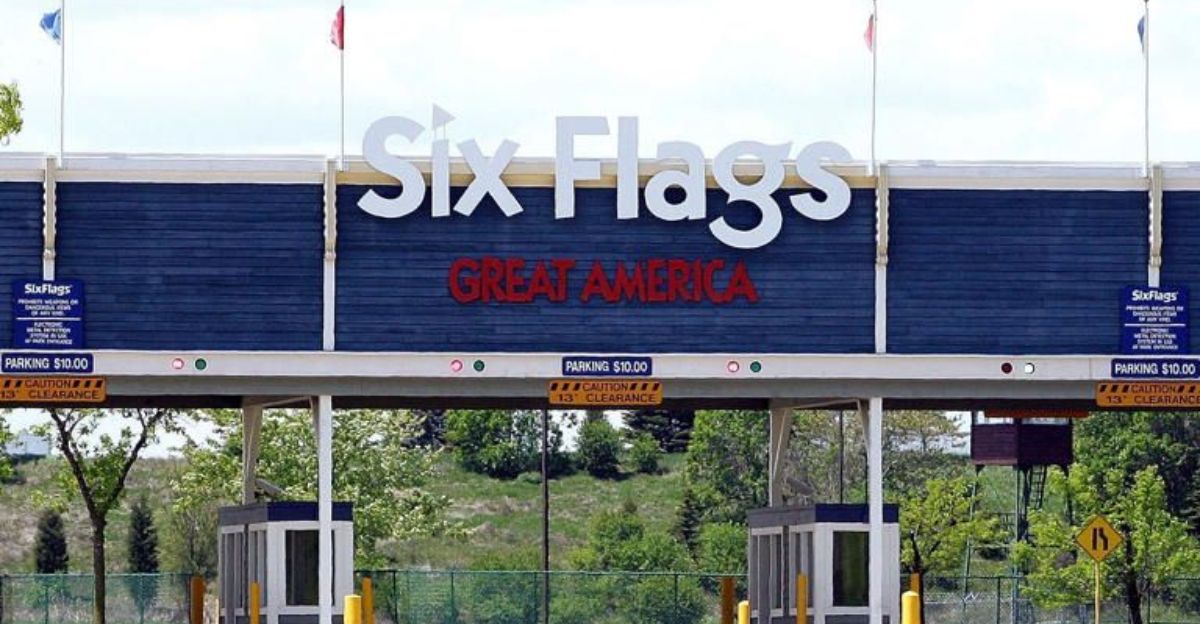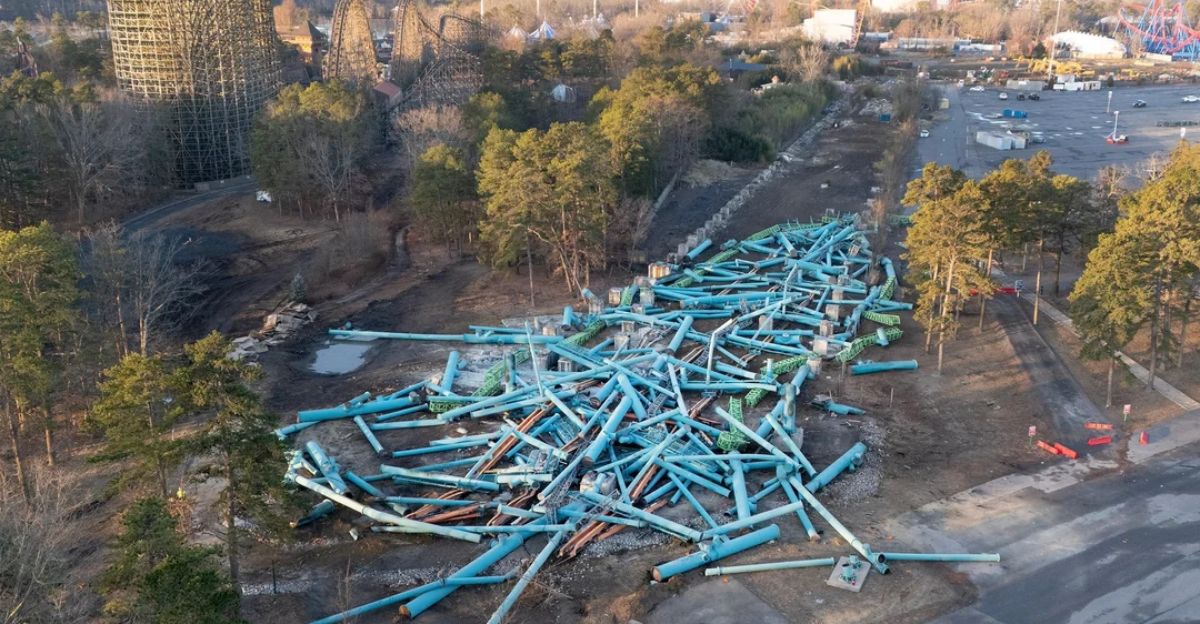
It’s November 2, 2025, and Six Flags America and Hurricane Harbor Maryland are locked behind steel gates, permanently shut down. Just a month earlier, the company had posted a jaw-dropping $1.2 billion loss for Q3 2025, and the impact is rippling across the industry. The once-thriving parks are now deserted, their gates left to rust. Fans are left stunned as the parks—once packed with families and adrenaline seekers—are dismantled, signaling the start of Six Flags’ grand restructuring.
But the closures are just the beginning. What caused this massive financial crater, and who will be left standing after the dust settles?
Immediate Impact: Fans Left Disappointed

Fans were left heartbroken by the demolition of Kingda Ka, and the closures of Six Flags America and Hurricane Harbor Maryland rocked local communities.
Thousands of annual passholders were left without access to their favorite attractions, sparking widespread frustration and concern. The loss of these iconic locations left fans questioning the future of their beloved parks.
Corporate Response: Restructuring and Asset Sales

Six Flags wasted no time implementing a major restructuring plan. The company conducted a sweeping portfolio review and decided to prioritize smaller, more profitable parks.
This included replacing regional management and reducing full-time staff by 10%. These actions aim to streamline operations, but the future of the company remains uncertain.
Substitutes and Adjacent Markets See Opportunity

As Six Flags closed its major parks, smaller entertainment venues and family attractions in the region saw an uptick in attendance. Local arcades, water parks, and family entertainment centers positioned themselves as alternatives, capturing displaced visitors and seasonal workers.
This shift reflected a growing demand for more intimate, accessible entertainment options.
International Trade and Tourism Ripple Effects

Six Flags parks have long attracted international tourists. With several parks closing, the global tourism sector felt the impact, especially in terms of ride component supplies and concessions.
The ripple effects reached beyond local communities, potentially affecting international trade relationships and the tourism industry at large.
Human Toll: Workers and Local Businesses Hit Hard

The closures resulted in the loss of hundreds of jobs for Six Flags employees. Local businesses, from hotels to restaurants, also saw a significant downturn.
With the company’s efforts to shift focus impacting third-quarter results, the human cost of Six Flags’ strategy became painfully clear. Workers and families in nearby areas faced an uncertain future.
Political and Policy Response: Calls for Oversight

In response to the closures, local officials in Maryland and New Jersey called for more transparency from Six Flags. Some lawmakers even proposed support measures for displaced workers and discussed potential redevelopment plans for the closed park sites.
This situation prompted political debates about the long-term implications of corporate downsizing on local economies.
Economic Impact on Affected Regions

The closures of Six Flags America and Hurricane Harbor Maryland resulted in a significant decrease in tourism in these areas.
Hospitality businesses and retailers braced for a slump, while some local economies found themselves grappling with a loss of key entertainment options. The financial implications are expected to reverberate for months.
Lifestyle Changes: Shifting Family Recreation Habits

As families lost access to Six Flags parks, many sought alternative recreation options. Community centers, state parks, and digital entertainment platforms filled the void left by the closures.
This shift in consumer behavior highlights changing preferences toward more accessible, cost-effective leisure activities, further challenging traditional theme parks.
Cultural Debate: The End of an Era?

The demolition of Kingda Ka, once the tallest roller coaster in the world, sparked passionate debates among thrill ride enthusiasts.
Some see the loss of this iconic attraction as part of necessary industry consolidation, while others lament the passing of a 20-year legacy. This cultural divide underscores the emotional connection fans have with these monumental rides.
Global Perception: Portfolio Consolidation by U.S. Operators

Six Flags’ strategy reflects broader trends in the theme park industry, as more operators move toward consolidating their portfolios.
Mergers and asset reviews are becoming increasingly common, signaling a shift from expansive growth to more targeted investments. This trend raises questions about the future direction of large-scale entertainment companies.
Unexpected Winners and Losers

While Six Flags’ closures hurt regional economies, other local attractions saw an increase in business. Smaller parks and entertainment venues seized the opportunity to capture the attention of displaced parkgoers.
Meanwhile, ride manufacturers and suppliers also had to adjust to the changing market conditions brought on by the shifting landscape.
Market Speculation and Investor Concern

Investors were quick to react to Six Flags’ restructuring efforts, with the company’s stock showing significant volatility.
The uncertainty surrounding the company’s portfolio strategy and the continuing financial losses raised red flags for analysts. Speculation about Six Flags’ long-term viability fueled investor concern as the market digested the news.
What’s Next for Six Flags?

As Six Flags continues its efforts to streamline its operations, the fate of other parks remains up in the air. While the company is focusing on improving its high-performing locations, observers predict that more closures and restructuring could follow.
The future of the theme park industry as a whole seems increasingly uncertain as consumer habits continue to shift.
The Future of Theme Parks: In Flux

The ongoing changes at Six Flags signal a broader shift within the theme park industry. With increasing competition and changing consumer preferences, many parks are struggling to maintain relevance.
As operators reevaluate their portfolios and business strategies, it’s clear that the landscape of family entertainment is undergoing a transformation that could reshape the industry for years to come.


